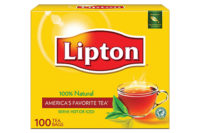Loyalty rewards, cross promotions could boost beverage sales
Beverages currently make up 6 percent of drug store sales, IRI reports

Although consumers tend to be loyal to their preferred drug stores, 30 percent are more likely to patronize a drug store if it has a loyalty card that offers savings, thus increasing shopper loyalty, according to Diana Smith, senior research analyst of retail and apparel at Mintel. This presents opportunities for the channel to leverage this consumer perk to promote grocery items, including beverages, to shoppers, the Chicago-based market research firm suggests in its January 2014 report “The Drug Store Shopper.”
Beverage sales make up about 6 percent of total drug store sales, compared with 9 percent on average across all channels, according to Susan Viamari, editor of Thought Leadership at Chicago-based Information Resources Inc. (IRI). Most consumers visit the channel to instead purchase over-the-counter medication
(45 percent of surveyed consumers), beauty and personal care items (44 percent), prescription medications (42 percent), and vitamins and supplements (38 percent), Mintel’s Smith says.
To help beverages better compete with other product categories in the stores, the drug store channel can turn to the technology behind loyalty and rewards programs. For example, Woonsocket, R.I.-based CVS Caremark’s ExtraCare consumer loyalty program gives its members a personalized myWeekly Ad that highlights products and special offers that are in line with what that particular consumer usually purchases. In addition, the program offers customized coupons that are shared online or printed on the shopper’s receipt to use on his or her next visit. This can be expanded to share special offers that are exclusively available to that specific shopper to redeem on grocery items, Mintel suggests in its February 2014 report “Grocery Retailing – US.” In turn, this can offer consumers customized shopping experiences while also highlighting beverage products that they might not always think to pick up on their drug-store run, industry experts note.
|
To target smartphone-savvy shoppers, drug stores can utilize push notifications through retailer apps to remind consumers to pick up a drink while they’re in the store, Mintel poses in its “Grocery Retailing – US” report.
This promotion medium is especially pertinent, considering that the younger consumers that are most likely to use mobile apps also are the beverage category’s biggest consumers in the drug store channel. In general, younger adults are more likely than older consumers to purchase food or beverages for immediate or later consumption at drug stores, Mintel’s report states. Thirty-one percent of adults aged 18-34 purchase non-alcohol beverages in drug stores, compared with 24 percent of all consumers aged 18 and older on average, and 17 percent of adults aged 25-34 purchase alcohol beverages here, compared with 11 percent of legal-drinking-age consumers on average, Mintel’s Smith adds.
However, mature adults also tend to indulge in impulse purchases in this channel. Adults aged 55 and older are the most likely to visit the channel, with 90 percent of the age group doing so, mostly to fill prescriptions or pick up over-the-counter medications, Mintel’s Smith says. While they are waiting for their prescriptions to be filled, these consumers are likely to walk around the store and shop other product categories featured on the shelves, she adds. Occasions like these pose opportunities for consumer packaged goods brands and drug stores to use cross-category promotions to lead consumers around the store to pick up beverage products in addition to their medication needs.
For example, because more emphasis is being put on the health benefits of various beverages, stores can cross-promote beverages with other health and wellness items in the store, continuing to allow consumers to get the most out of their beverages, says David McGoldrick, research associate at Euromonitor International, Chicago. However, brands and stores should be careful when pairing competing items, as some beverage items claim to improve immune systems, boost digestion or offer other health benefits, making medications less necessary, he notes.
Tea is an option for ill consumers, pairing it with over-the-counter medications as at-home cold-and-flu remedies, but sparkling and enhanced waters also can play a role in this cross-promotional space, Mintel’s Smith suggests. “For example, people drink Gatorade when sick for the electrolytes, water for hydration, and clear sodas for stomach settling, but a sparkling [or] enhanced water combines all three into one,” she explains. “Thus, there is an opportunity to cross-promote waters with cold-and-flu or stomach-remedy medications.”
Cross-promotions in general will be valuable tools to keep the drug store channel evolving to compete with other channels. “[The] increased competition will continue to motivate drug stores to undergo transformations into more than just places for medication but service providers for overall health and wellness needs, [making it a] ‘health’ store vs. a ‘drug’ store,” Mintel’s Smith says. “Retailers will continue testing and adopting new technologies, which will make shopping easier, including improving shopping options … and [continuing] to provide more health and wellness products and services.”
Total-store impact
Although it makes sense within the drug store channel to utilize cross-promotions that highlight the health-and-wellness benefits of beverages, other types of pairings can appeal to shoppers in this channel as well, industry experts note.
For example, to highlight the grab-and-go nature of beverages sold within the channel, drug stores can cross-promote such beverages with grab-and-go food items, suggests Diana Smith, senior research analyst of retail and apparel at Chicago-based Mintel. “Drug stores are increasingly offering more quick, grab-and-go options and at the same time expanding their grocery options,” she explains. “It could make sense to pair with other foods used similarly. For example, it would be logical to pair a grab-and-go breakfast or food item with a single-serve, refrigerated drink or to place them near each other.”
Other cross-promotion tactics can be geared toward specific audiences, Smith suggests. “For example, men aged 18-34 are heavy purchasers of non-alcoholic drinks,” she notes. “Messages about other items that young men may be interested in, such as food or even household supplies, [also] could be promoted on [the] pack. These messages could also be themed, such as providing a coupon for beverages on items such as snack foods and other Super Bowl favorites, reminding them not to forget the sodas.”
For consumers who are less likely to purchase beverages in this channel, such as women aged 55 and older, drug stores and consumer packaged goods manufacturers can place on-pack beverage promotions on items they do commonly buy, like medications and beauty products, Smith adds. This can encourage them to venture into the beverage aisle and pick up a drink.
Looking for a reprint of this article?
From high-res PDFs to custom plaques, order your copy today!







